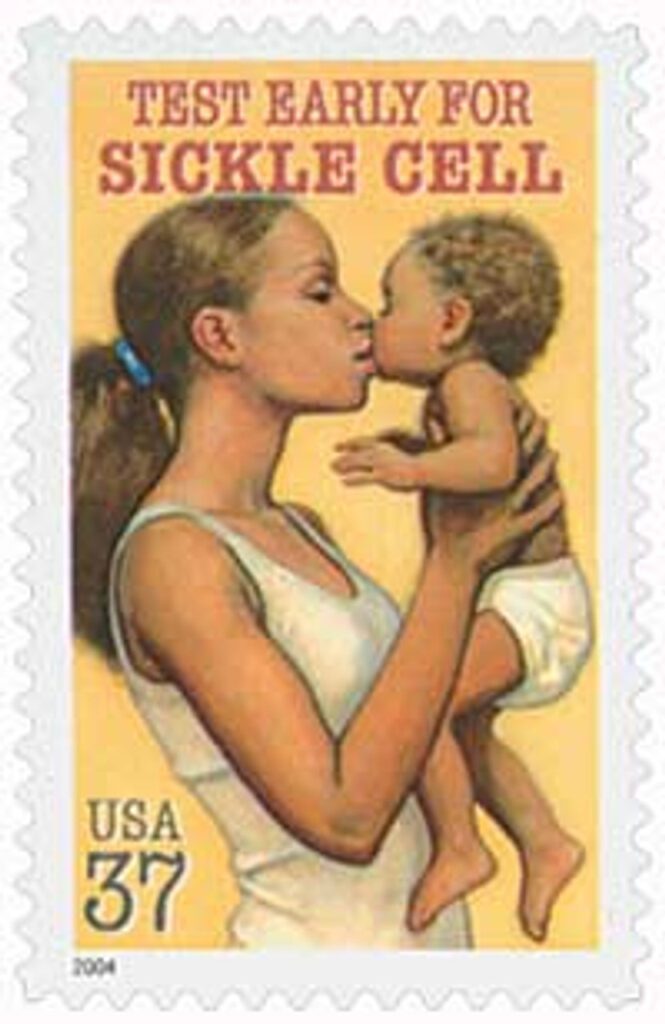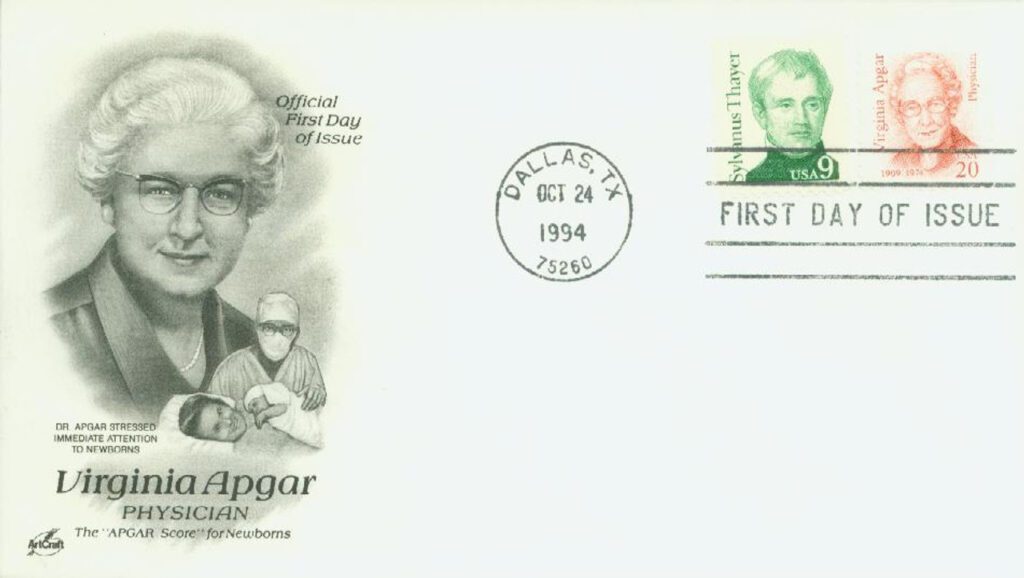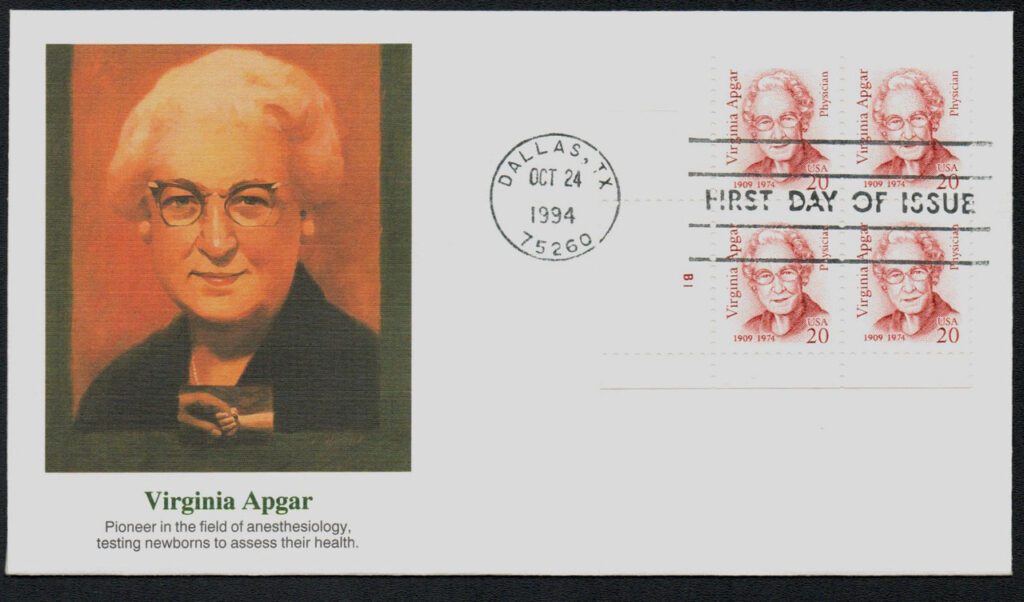Dr. Virginia Apgar was born on June 7, 1909, in Westfield, New Jersey. She was a pioneer in the field of neonatology, the area of medicine that specializes in premature and ill newborns. Her work is credited with drastically reducing infant mortality worldwide.
The youngest of three children, Apgar knew from an early age that she wanted to be a doctor. She attended Mount Holyoke College, where she studied zoology and minored in physiology and chemistry. After graduating in 1929, she went on to attend Columbia University College of Physicians and Surgeons. She graduated fourth in her class from that university in 1933 and completed her residency in 1937.
At the suggestion of a colleague, Apgar decided to enter a career in anesthesiology. The colleague, Allen Whipple, reasoned that there were significant improvements needed in anesthesiology and he felt she had the “energy and ability” to make a difference in that field. Apgar studied for six months at the University of Wisconsin-Madison, home to the first anesthesiology department in the country. After another six months of study at New York’s Bellevue Hospital, Apgar earned her anesthesiology certification in 1937.
In 1938, Apgar started and was made director of the anesthesia division at Columbia-Presbyterian Medical Center and Columbia University of College of Physicians and Surgeons. She was the first woman to lead a specialty division at Columbia and spent much of the next decade as an administrator, teacher, recruiter, coordinator, and practicing doctor. Early on, she struggled to staff the department as anesthesiology was only recently made an official medical specialty. After World War II, her residency program gained popularity and the department was made official.

Apgar became the first female full-time professor at Columbia’s College of Physicians and Surgeons in 1949, remaining in that post for a decade. She also conducted clinical research at Sloane Hospital for Women. Apgar was largely responsible for founding the field of neonatology, the area of medicine that specializes in premature and ill newborns. While the infant mortality rate had dropped over the past 20 years, the number of babies dying within the first 24 hours didn’t change. Apgar conducted studies to identify the differences between healthy babies and those with medical issues.

In 1953, Apgar developed the Apgar Score, a quick test to assess the health of newborns. The test looks at heart rate, respiration, color, muscle tone, and reflex irritability. Each of these concerns receives a score of 0 to 2, with 2 being optimal and 0 being in distress. The test is completed one minute after birth and then every five minutes as necessary. The Apgar score was adopted in hospitals around the country and is credited with drastically reducing infant mortality worldwide.
Apgar left Columbia in 1959 and earned a Master of Public Health degree from Johns Hopkins School of Hygiene and Public Health. She spent the rest of her life working with the March of Dimes as vice president and directing research to prevent and treat birth defects. Apgar was one of the first in the organization to discuss the issues of premature birth. She led a campaign for immunization against rubella, encouraged birth defects registries, and helped get genetic history and pregnancy history included in medical record keeping. It was also during Apgar’s time that the March of Dimes began to promote healthy pregnancies with the slogan “Be good to your baby before it is born.” Apgar also traveled the country extensively speaking out about the importance of detecting birth defects, and the March of Dimes’ annual donations more than doubled during her time with the organization.
Apgar continued to teach, becoming the first person to hold a faculty position in teratology (the study of birth defects) at the Cornell University School of Medicine. She also published more than 60 articles and essays as well the 1972 book, Is My Baby All Right? Over the course of her career, Apgar received several honorary degrees and awards from a variety of medical organizations. In her free time, Apgar played violin (and learned how to make one!) and also enjoyed fishing, golfing, stamp collecting, and took flying lessons (with the goal of someday flying under the George Washington Bridge). Apgar died of cirrhosis on August 7, 1974.
| FREE printable This Day in History album pages Download a PDF of today’s article. Get a binder or other supplies to create your This Day in History album. |
Discover what else happened on This Day in History.





Well done
Did she or anyone else fly under the gw bridge?
When did she have time for hobbies? She sure left this world a lot better place then before. Thanks again for another good read.